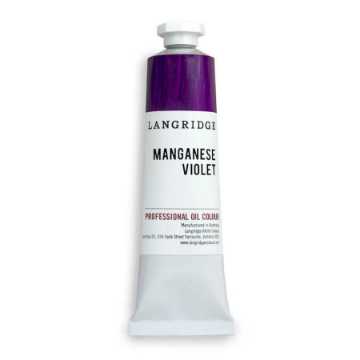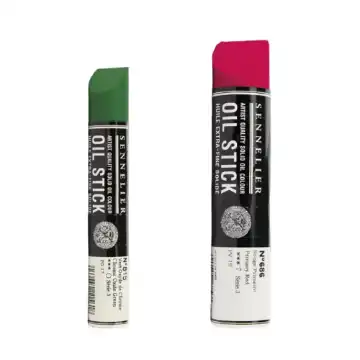Oil Paints
Find top quality oil paints at Art to Art we carry artist paints from trusted makers like Rembrandt, Langridge, Art Spectrum, Michael Harding and Gamblin. So whether you’re a professional artist or this is your first time painting, you can find the perfect Artist oil paints for you at Art to Art.
Langridge Handmade Oil Paints
Maimeri Puro Oil Paint
Gamblin Artist Oil Colour Paints
Michael Harding Artist Oil Paints
Cobra Water Mixable Oil Colours
Art Spectrum Professional Oil Paints
Rembrandt Oil Colours
Mont Marte Oil Paint 75ml
Daler Rowney Georgian Oil Colour
Oil Paints
With their slow drying time and blendability, Artist oil paints are one of the most historically popular paints. And with a depth of colour that’s unmatched, you’re sure to create a masterpiece with them! At Art to Art, we have a wide range of oil based paints for all skill levels and art mediums.
To determine whether paint is oil-based, you can look for several indicators. First, oil paints typically take longer to dry compared to water-based alternatives, so if the paint remains tacky or wet for an extended period, it may be oil-based. Additionally, oil paints often have a glossy sheen when dry, which can help identify them. Another clue might be the texture of the painting; oil paints allow for rich, thick layering, so a heavily textured surface could suggest the use of oil paint.
Common oil painting techniques include 'dry-brush' and 'sgraffito.' The dry-brush method entails using a brush that is relatively free of paint to apply color onto a canvas that hasn't been pre-wetted, allowing for a textured appearance. On the other hand, sgraffito involves etching into the upper layer of paint to expose the underlying layer, thereby creating intricate effects and adding dimensional depth to the artwork.
Types of oil based paint
Student oil paints: with a rich and creamy consistency, student oil based paints are a great way to dip your toes into the oil painting world. They handle extremely well, offer great coverage and are also incredibly affordable. Some brands to look for:
- Daler Rowney
- Mont Marte
Professional oil based paints: take your artwork to the next level with our range of high quality, artist oil paints. With maximum fineness, excellent lightfastness qualities and durability, these paints will bring your creative vision to life. Some brands to look for:
- Langridge
- Rembrandt
- Michael Harding
- Gamblin
- Maimeri Puro
- Art Spectrum
Water mixable oil paint: suitable for all artists, these water mixable paints offer artist-grade pigment, an easy cleanup and no need for solvents! This makes for a healthier painting environment, meaning they’re ideal for school classes, studios or your home. Plus, after drying, they look exactly like any traditional oil based paints.
Oil painting sticks: made from pure concentrated pigment, oil sticks can be used for sketching, painting or creating complete works of art. Like regular oil based paints, they can be diluted with turpentine and are very easy to use.
At Art to Art, we’re your one stop shop for quality art and painting supplies. You can get artist oil paint sets, oil mediums, linseed oil, oil paint brushes and more! Order now for same day dispatch and enjoy free shipping when you spend over $100.
FAQs
What is the difference between oil paint and acrylic paint?
Oil paint and acrylic paint are utilized widely in the art world but possess distinct characteristics that cater to different artistic needs. Oil paints, composed of pigments suspended in oil, take longer to dry, affording artists the flexibility to work and rework their strokes and layers over extended periods. This property makes oil paints ideal for creating detailed and textured artwork where gradual blending of colors is advantageous. On the other hand, acrylic paints are water-based and dry quickly due to water evaporation and polymerization of the acrylic polymer. This quality is particularly advantageous for artists who prefer working at a faster pace or for projects that require several layers without long waiting times. Furthermore, acrylics are easier to clean up, requiring just soap and water, unlike oil paints, which often need solvents for cleanup. Texture-wise, oil paints typically have a richer, more buttery consistency, allowing for smooth, lush applications. Acrylic paints are more versatile in viscosity, ranging from ink-like to heavy-bodied, which mimics the texture of oil paints. In essence, the choice between oil and acrylic paints largely depends on the artist’s preferred working time, desired texture, and ease of cleanup. Each type offers unique advantages that can be better suited to different styles and techniques in painting.
What is oil paint?
Oil paints in the tube are primarily vegetable oils (such as linseed oil) and pigment. Oils harden in a complex chemical process after they are applied to the canvas. They dry to a satin finish and can be thinned or thickened using various oil mediums. They can also be cleaned up with various solvents or brush cleaners.
Are oil paints for beginners?
Absolutely! Oil based paints have a much slower drying time compared to acrylics, so you have more flexibility. Blending is also much easier with oil artist paints.
Can I speed up or slow the drying time of my oil paints?
Yes we carry a great selection of oil painting mediums that will help you do this.
How do I clean up my oil paints?
The most common way to clean up oil based paints is to use an odourless solvent. These are lox-toxic alternatives to traditional industrial solvents. Completely odourless, low toxic solvents are the ideal turpentine replacement for artists concerned about exposure to harmful solvents. There are also a number of other solvent free options available for artists wishing to use more eco friendly options.
What are water mixable oil paints?
Water mixable oils are an exceptional line of paints that are perfect for any painter. They’re based on a modified, water mixable oil binder, meaning that no harsh solvents, turpentine or mineral spirits are necessary in the painting or cleaning up process.
This makes for a much healthier painting environment, with no toxic or odorous fumes to inhale.
What are the disadvantages of oil paint?
Oil paint typically carries a higher price tag compared to various other paints. It also has an extended drying period, which can be inconvenient. Additionally, oil paint emits a potent smell that necessitates its use in areas with good ventilation to avoid discomfort and health issues.
How Long Does Oil Paint Take To Dry?
Oil paints are known for their extended drying time compared to other types of paints, such as acrylics. The drying process for oil paints involves the oxidation of the solvents within the paint. Typically, the surface of the oil paint will start to dry within 24 hours, but it can take as long as 3 months for the paint to fully cure and completely dry. This slow drying time allows artists to work with the paint longer, but it also requires patience for the final results to be ready.
Can You Use Oil Paint On Top Of Acrylic Paint?
Certainly! When tackling the question of whether you can use oil paint on top of acrylic paint, it's important to consider the distinct properties of each type of paint. Acrylics are water-based, whereas oils are oil-based, meaning they do not naturally mix well on a palette. However, in terms of layering them on a canvas, it is indeed feasible to apply oil paint over dried acrylic paint. This method is generally more effective than doing the reverse because oil paints require a different approach to drying and varnishing compared to acrylics. Thus, while mixing the two types of paint is not advisable, layering them in the correct order can achieve good results.





















































































